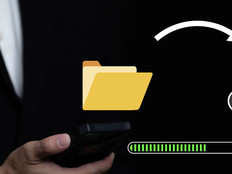Four Strategies for Mobile Fundraising Success
Most nonprofits have caught on to the promise of mobile fundraising and are already wise to the basics necessary for success, including ensuring that websites are mobile-optimized, and that “give” or “donate now” buttons are clear; implementing text-to-give programs; and building an app for the organization.
Still, experts say nonprofits would be smart to consider more advanced methods for reaching donors and prompting them to give. These include:
- Implementing data-driven social messaging strategies that apply business intelligence and segmentation to social media targeting and storytelling can boost engagement. Social media drives 57 percent of traffic to mobile giving campaigns on Classy, a donations platform for nonprofits. Nonprofits need to know who their donors and potential donors are, which means understanding their demographics, their reasons for giving and their capacity to give. Some social media platforms are more popular than others among certain audiences, so nonprofits should choose their platforms carefully and craft messaging based on what works with each audience. “A social media engagement strategy isn’t as simple as just having a page that posts stellar content, although that’s an important piece of the pie,” Classy explains on its blog. “It also means navigating the unique formulas each social media platform uses to deliver content to followers."
- Utilizing customer relationship management tools, such as Zendesk and Microsoft Dynamics, can help nonprofits maximize messaging with existing donors. CRM tools have built integrations with popular messaging applications such as the Meta-owned WhatsApp. This makes it easy to allow anyone whose contact information is in an organization’s CRM to authorize that organization to start messaging them via such an app or via SMS texts. John Costello, an assistant professor of marketing at the University of Notre Dame’s Mendoza College of Business who studies nonprofits, says that CRM solutions can provide a relatively easy way to target potential or existing donors based on factors known about the audience.
- Building resilient websites that are mobile friendly, can drive peer-to-peer fundraising and handle volume fluctuations is key. Experts advise nonprofits to load-test their websites often to ensure they can handle the additional volume that comes during times such as Giving Tuesday. At the same time, nonprofits should ensure they have security technology in place, such as a web application firewall, to ensure they can withstand volume-based cyberattacks.
- Implementing chatbots powered by artificial intelligence can keep donors engaged. Chatbots are gaining popularity with organizations of all kinds, including nonprofits, because they can help answer potential donors’ questions and direct them to additional resources without the need for human intervention. Chatbots are also smart enough to know when such intervention is needed in specific cases and can direct donors to it. Chatbots can be a useful tool in a mobile giving campaign especially when employed as part of a text-to-give program or when used in conjunction with a mobile messaging app.
UP NEXT: Learn why nonprofits should consider restructuring to support recurring donations.










